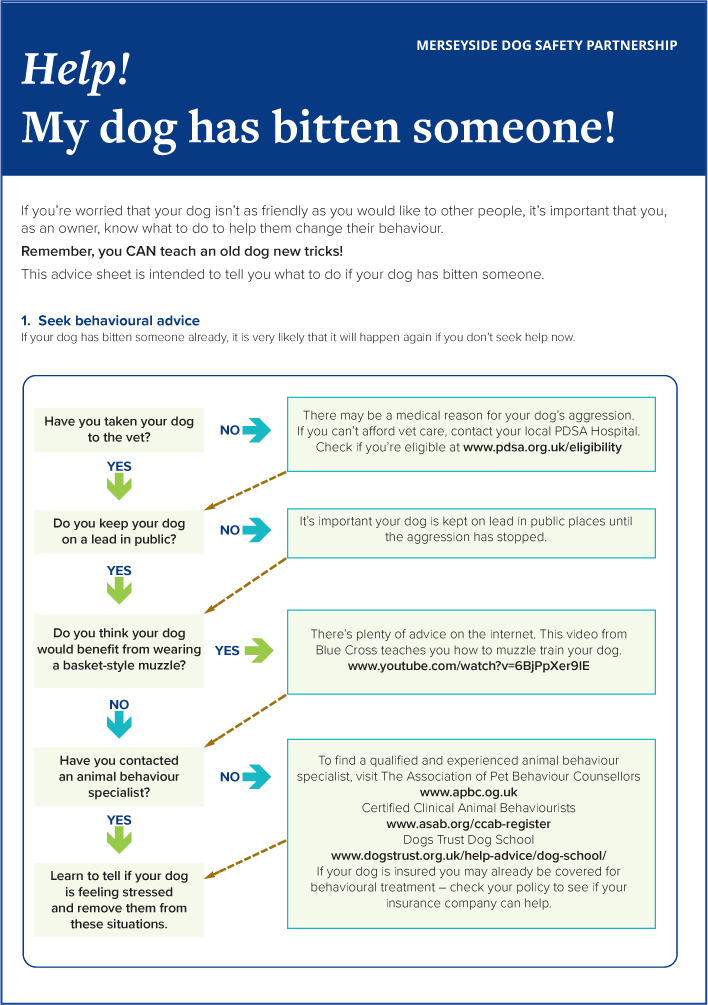Dog bites have a profound impact on our healthcare system. From April 2019 to March 2020, there were over 8800 hospital admissions as a result of a bite or strike from a dog in the UK (NHS Digital, 2020). A recent analysis of hospital admission data in England found that while incidences of dog bites among children have remained consistently high, incidences in adults have tripled over the last 20 years (Tulloch et al, 2021). However, only 1% of dog bites result in hospital admissions, so this is a small contribution to the overall picture (Westgarth et al, 2018). These incidents can potentially have a negative impact on dog welfare (such as punishment, seizure or rehoming). A review of dog bites to children by Jakeman et al (2020) suggested that where dog behaviour modification and risk management is not possible, temporary or permanent rehoming should be considered. Dog bites are preventable, and we all have a responsibility to ensure we help reduce this impact to safeguard both dog and human health and wellbeing.
In 2015, the Communication Workers Union (CWU) began working with the University of Liverpool to strengthen its approach to preventing dog bites among staff, as 2655 dog bites to postal workers occurred in that year. It was subsequently decided that a multi-disciplinary approach was needed to tackle dog bites effectively, taking into consideration other perspectives from key stakeholders. As a result, in 2018 the Merseyside Dog Safety Partnership (MDSP) was established, including key community organisations alongside the CWU and University of Liverpool, animal welfare charities, NHS staff, local authorities such as councils and police, as well as animal behaviour and veterinary professionals.
The main aim of the MDSP is to encourage positive human–dog interactions and relationships to reduce dog bite incidents. The group currently meets monthly and looks at ways to reduce dog bites, such as improving education and awareness of safe behaviour around dogs for professionals, dog owners and the general public. The recently launched www.merseydogsafe.co.uk includes guidance for the public, relating to buying a puppy during the COVID-19 pandemic, and promoting safe behaviour around dogs, in response to the increased time the public has been spending at home with our dogs during lockdown.
All MDSP resources are free to download and include advice on what people can do if they are bitten by a dog, and what to do if their dog bites someone (Figure 1). These are great sources of information to have on hand for professionals in any workplace, especially in veterinary practices or those coming into close, regular contact with dogs.

Further reading
- www.merseydogsafe.co.uk
- Professional Resources: https://merseydogsafe.co.uk/professional-resource/
- Public Resources: https://merseydogsafe.co.uk/public-resource/
- Social media: Twitter (@MDSPNews), Facebook (@MDSPNews).


